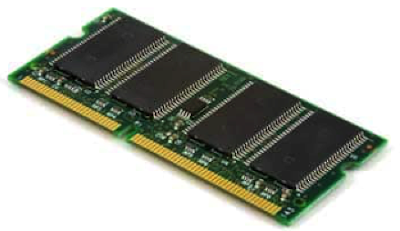DRAM and types of DRAM
DRAM is a type of Random Access semiconductor memory that is used to stores data or programs needed by a processor to function. Each bit of the data store on a separate capacitor. It is used in personal computers (PCs), workstations, and servers.
How does DRAM work?
DRAM memory cell is made of two elements: a transistor and a capacitor. When a bit store in memory, the transistor is used to charge or discharge the capacitor. A charged capacitor represents a logic high(1), while a discharged capacitor represents a logic low(0).
Memory cells are arranged in a two-dimensional grid array of columns known as bitlines and rows known as wordlines. The intersection of a bitline and wordline constitutes the address of the memory cell. During a read or write, the wordline goes high and the transistor connects the capacitor to the bitline. Whatever value is on the bitline '1', it means data store on Capacitor and '0' means data gets retrieved from the capacitor.
There is a problem in DRAM, capacitors leak charge over time. Therefore, to maintain the data stored in memory the capacitors must be refreshed periodically.
Types of DRAM
Asynchronous DRAM
This was the first type of DRAM in use. This was called asynchronous because the memory access was not synchronized with the system clock. The system contains a memory controller, and this memory controller is synchronized with the clock. Due to this, the speed of the system is also slow.
SDRAM
Synchronous Dynamic Random Access Memory is the full form of SDRAM. It synchronized the memory speed with the CPU clock speed so that the memory controller knows the CPU clock cycle. It also keeps data buses continuously busy. In this way, the CPU can execute more instructions at once. It is faster than the Asynchronous DRAM.
RDRAM
The full form of RDRAM is Rambus Dynamic Random Access Memory. It is developed by Rambuys Inc and is the fastest type of computer memory available. Its operating speed is more than other types of DRAM. RDRAM is typically used for video memory on graphics accelerator cards, for cache memory, and for system memory in high-performance workstations and servers.
Type of RDRAM
DRDRAM
DRAM memory module formats
DRAM is produced as integrated circuits and mounting onto printed circuit boards. In early DRAM ICs were usually either installed directly to the motherboard or on ISA expansion cards. Later they were assembled into multi-chip plug-in modules. These multi-chip modules are available in a number of formats which are as follows
Single In-line Memory Module, SIMM:
This type of DRAM or memory module has a 32-bit data bus. It holds six to nine RAM chips per board where the 9th chip is used for parity error checking. SIMMs have 72 pins to connect to a motherboard and support 32-bit data transfers.SIMM modules can store a maximum of 64 bits. The amount of power consumed by SIMM is 5 volts. SIMM module is no longer used.
Dual In-line Memory Module, DIMM:
With the increase in data bus width i.e. 64 bits, DIMMs replace the SIMMs module. DIMM has separate electrical contacts on each side of the module.DIMMs are typically used in desktop PCs, laptops, printers, and other devices.DIMM modules can store up to 1 GB. The amount of power consumed by DIMM is 3.3 volts.
Small outline DIMM, SO-DIMM:
This type of DRAM module is about half the size of the standard DIMM. Because of the small size, they are used in portable computing devices like laptops, netbooks, tablets, etc.









Comments
Post a Comment